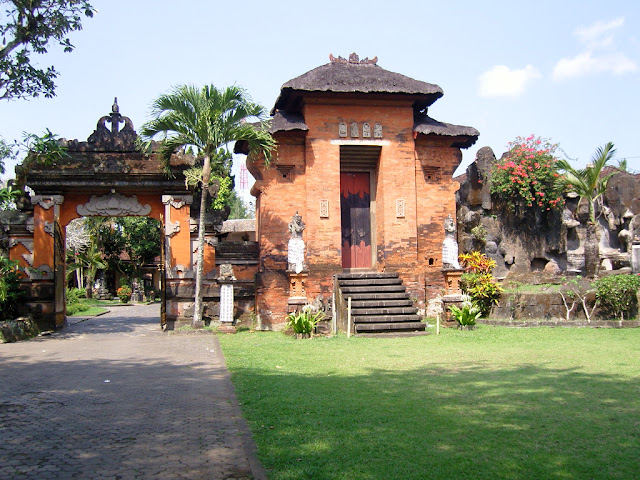
Held just outside of Candi Dasa in the indigenous Bali Aga village of Asak in Karangasem Regency, this ritual ceremony features a very traditional dance form called the Pendet Rejang. This ancient dance with its own function, role, attributes and elaborate costumes, is performed around June/July each year and takes place in the Great Hall of the village.
The dancers are adorned with ornamental crown-like headdresses decorated with artificial gold foil flowers called sasak flowers and they wear wraps made from traditional weaves (saput kain karah) on their tops. The offering dance Pendet Rejand is performed to kebyar gong gamelan and along with other dances such as the Abuang Taruna and Abuang Krama.
It starts at the southern end of the village and moves north in a circular fashion. Once the circuit is completed the dancers present special offerings to a group of young women called Jro Krama Saing who lay await in the main hall and the ceremony concludes with the commencement of the main ceremony once all the prani offerings have been arranged in the temple.
The two dance terms used for this dance have different meanings in different villages. Both dances have their own particular characteristics. In the traditional village of Asak in Karangasem, however, these two names are combined for a particular dance form the Pendet Rejang. This dance with its own function, role, attributes and costumes, is performed at the time of the Ngusabha Kasa Festival around June/July each year and is centred on the Great Hall in the village of Asak.
The Pendet Rejang dancers wear special costumes. Their head dress has a kind of crown with expensive jewels, and is decorated with gold flowers. No fresh flowers are used, but pure gold flowers called sasak flowers, with some golden cempaka flowers as a border for the headdress.
The dancers occasionally on special occasions wear a special covering for their breasts, called saput kain karah – such as is worn by the Rejang dancers of Bungaya village. At other times they wear gold painted cloth. In Asak the kebyar gong gamelan accompanies the dancers, unlike in the nearby villages of Tenganan Pegringsingan and Bungaya where Selonding groups perform the music.
When performed in the first month called sasih kasa – the Pendet Rejang dance also has the basic function of making an offering. The movements of this dance are not as dynamic as those of the Rejang dance in general. They are slower, as though by instruction, making this particular dance very mild creating a sacred impression. This dance is performed with other dances such as the Abuang Taruna and Abuang Krama dances. The dance must begin from the South, and go towards the North. Once the dancers have danced one complete circle, finally all the special prani offerings are presented at the main hall, and accepted by 24 old women from a group called Jro Krama Saing. This group of old women organizes all the water containers, the musical instruments, and alcoholic drinks which are taken around three times in front of the temple.
The Pendet Rejang dancers continually perform their duties, until finally all the offerings are properly arranged at the Temple. Then the work of the dancers is complete and everybody awaits the commencement of the main ceremony.






